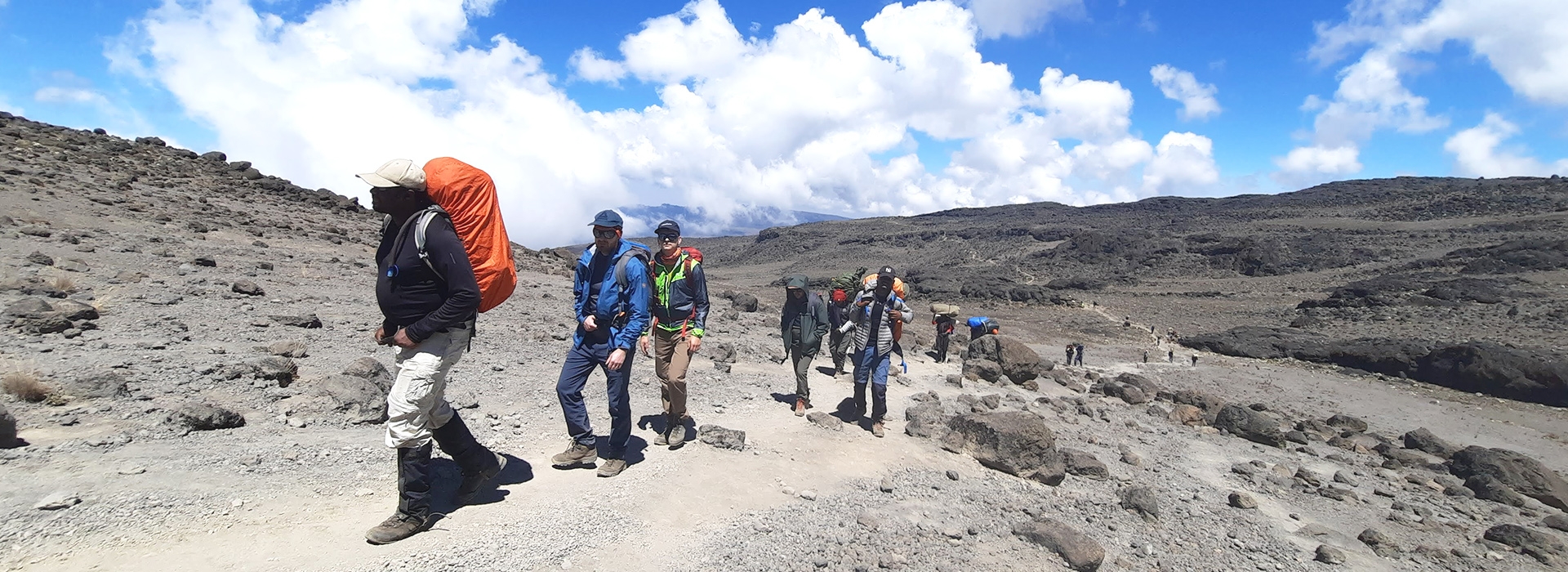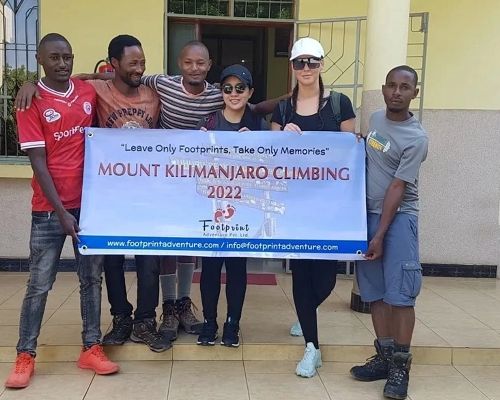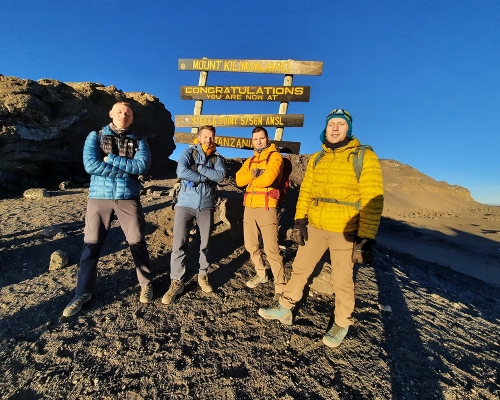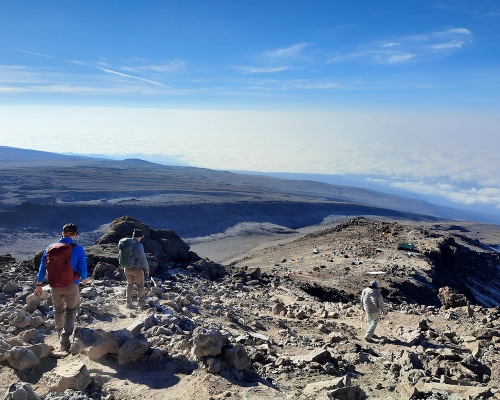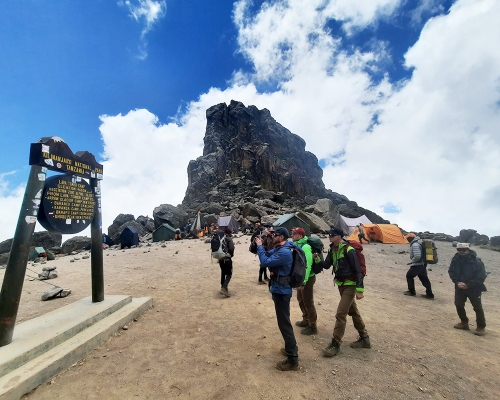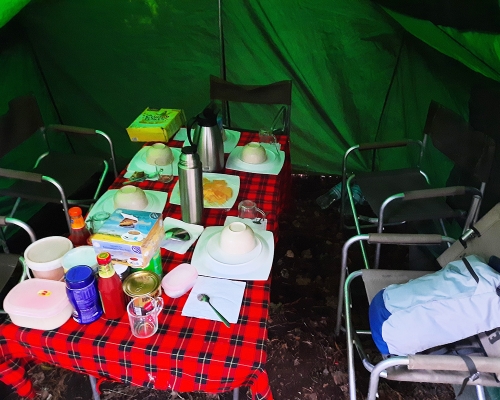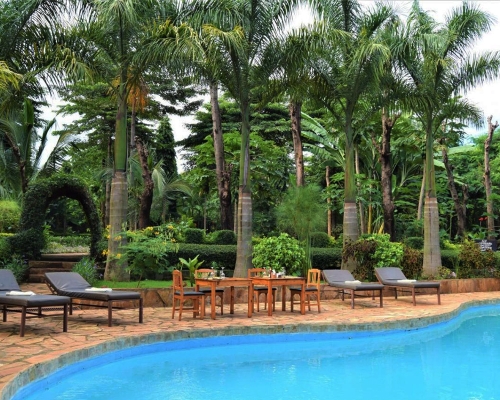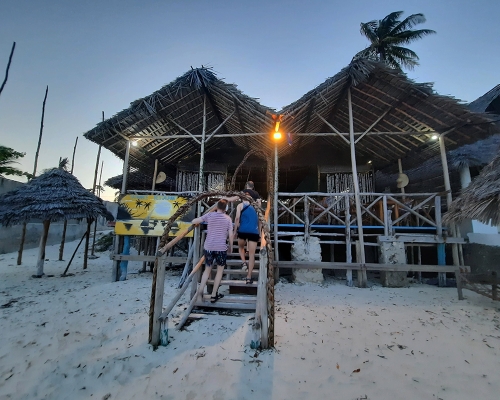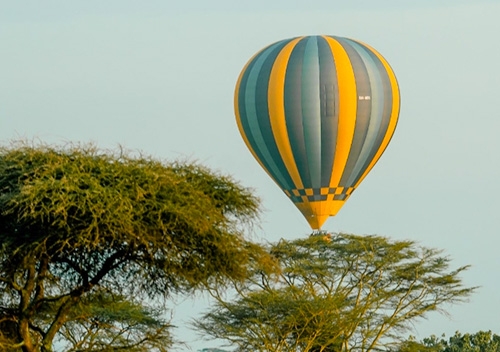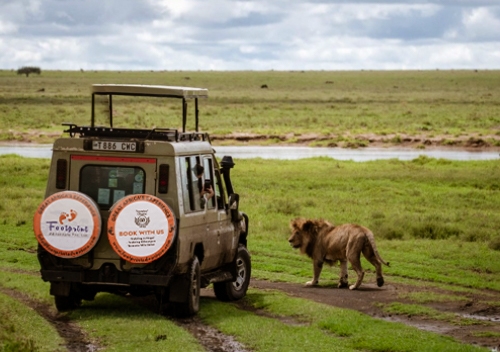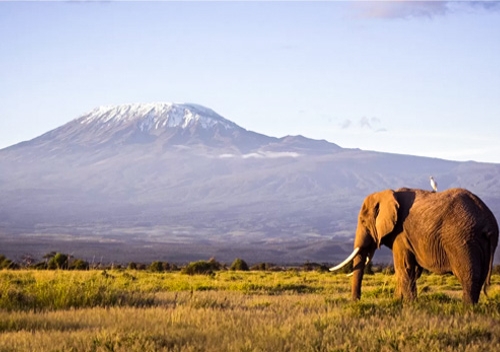Overview of the Kilimanjaro Machame Route Distance and Journey
Before you set off, it’s helpful to understand what lies ahead. The total Kilimanjaro Machame Route distance is approximately 62 kilometers (about 38.5 miles) from the Machame Gate to Uhuru Peak. Spread out over 6-7 days, the trek is designed to give your body time to adjust to the altitude while keeping you energized for the climb.
Popular Things to do while Climbing Kilimanjaro Via Machame Route
Tanzania is widely popular for wildlife safari and Kilimanjaro climbing especially. Besides this, beaches, friendly people, intriguing culture, amazing hospitality, the popular Serengeti National Park, and Kilimanjaro mountains. After the trek, exploring the Zanzibar Islands, beaches and drinks are other most fascinating things to explore during the Tanzania trip.
What’s the Machame Route Success Rate?
The Machame Route success rate is one of the highest among Kilimanjaro routes, especially for those opting for the 7-day itinerary. The extra day for acclimatization makes all the difference, giving climbers an 85-90% chance of reaching the summit. Compare that to the 6-day version, which has a lower success rate of around 70-75%.
Tips for a Successful Machame Route Climb
- Acclimatization: Use the "climb high, sleep low" strategy to adjust to altitude.
- Pace Yourself: Hike at a steady, manageable pace to conserve energy.
- Stay Hydrated and Well-Fed: Proper nutrition and hydration are essential for endurance.
- Mental Preparation: Positive thinking and determination are crucial, especially on summit night.
Weather & Climate
An African country located on the southern equator of the world offers a diverse climatic environment that depends on the elevation, and geographical structure of a particular place and season during the entire year. Normally on coastal sides, the temperature remains humid and hot and tropical weather prevails. While the northern side remains cold and the high altitude area becomes more chilled across the year. The central part of Tanzania remains dry and arid throughout the year.
Food in Tanzania
This African country offers a variety of local, international, and continental cuisine. The local cuisine has been widely influenced by several cultures, people, and flavors as there are about 120 ethnic groups along with people from Asia, and Europe who also lived there. The normal meals from Tanzania include local products like rice, wheat, corn, beans, cabbage, varieties of nuts, banana, mango, pineapple, and coconut. The taste of the Tanzanian foods is amazing and mouth-watering along with nutritious, healthy, and fresh as well. The popular local food in Tanzania is Ugali which is a staple food served during both lunch and dinner.
Ugali, Maandazi, Vitumbua, Wali wa Nazi, Supu ya Ndizi, Nyama Choma, Pilau, Chapati Bread, Mchemsho, Ndizi Nyama, Wali na Maharage, Mchuzi wa Samaki, Mishkaki, Date Nut Bread, Sweet Potato Pudding, Mchicha, Makubi, Coconut Bean Soup, Mkate wa Sinia, Vibibi are the some of the most popular and delicious foods in Tanzania which you must try when you are in Tanzania.
Accommodation on the Machame Route
Accommodation on the Machame Route consists of camping. Trekkers sleep in high-quality, weather-resistant tents provided by their trekking companies. Campsites are pre-designated along the route, offering basic facilities:
- Tents: Tents are double occupancy or single with foam mattresses.
- Dining: Meals are taken in a big dining tent.
- Sanitation: Portable toilets are often provided for added comfort.
Make sure to select a trekking company that offers clean and well-maintained equipment to ensure a comfortable experience.
Best time to climb Mt. Kilimanjaro
Mt. Kilimanjaro lies in the equatorial region of the earth, so you don’t have to experience the extreme hot and cold across the year. Though, there are a few months which is the best time to explore the beauty of Tanzania and Kilimanjaro. Normally, the peak season for climbing Mt. Kilimanjaro starts from December to mid of March and mid of June to the end of October. The good part of peak season offers favorable weather conditions and the best time for hiking, trekking, and climbing. Also, the high season offers beautiful views of the sunrise from the top and amazing scenery. The hectic part of the prime season is that the trail gets crowded, and obviously, the peak season brings the many fellow travelers, and climbers, and the region gets crowded.
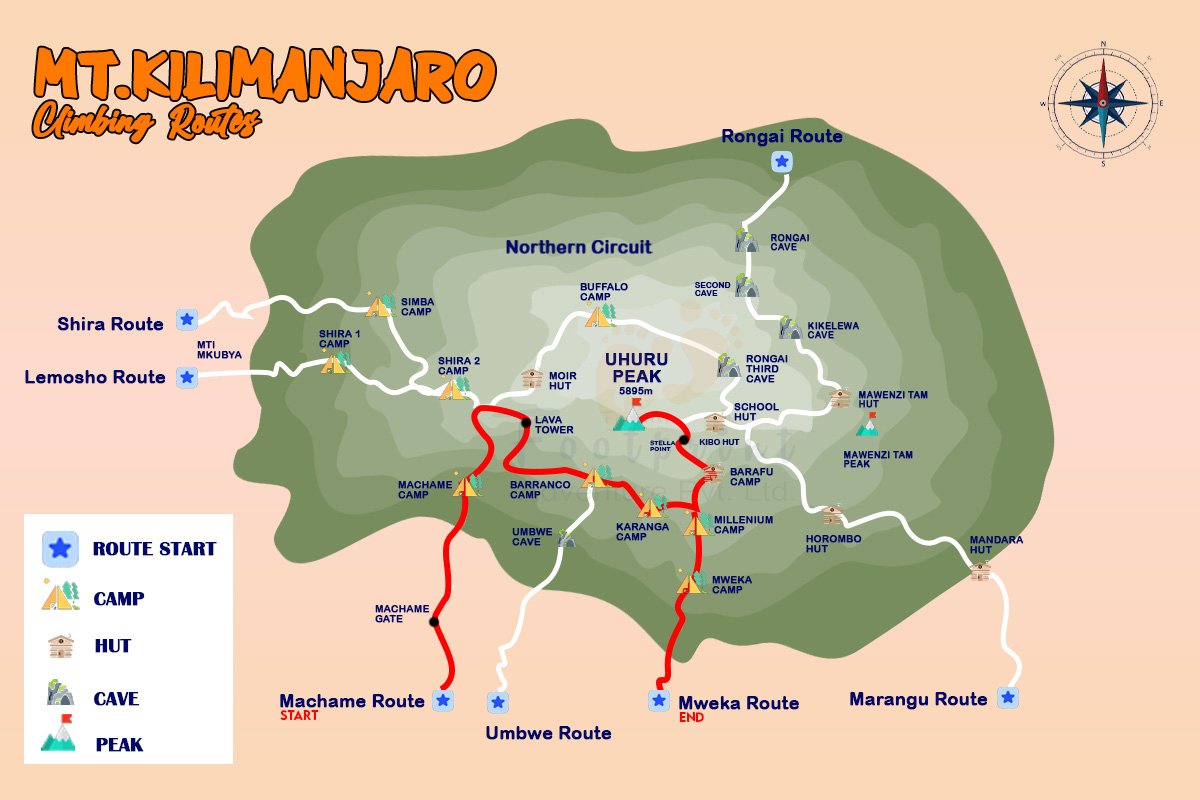
Popular Full Moon Climb
Mt. Kilimanjaro climbing is popular on full moon days. So, travelers patiently wait to make the trip during this period in the high season. Climbing during the full moon day brings the bright moonlight that illuminates the nearby surroundings with the glittering glacier. Also, you can see the magical views of Mt. Kino with more visibility during the full moon day. Also, another important reason for climbing Africa’s tallest mountain during the full moon is due to its glows that enhance the insights of the Kilimanjaro trekking passes and especially during your summit attempt.
The difficulty of Climbing Mt. Kilimanjaro
For beginners and new trekkers, Kilimanjaro climbing would be a little tough and intimidating task for you but it’s not impossible as the difficulty level for this climbing is not that extreme as compared to the high Himalayas of the Great Himalayan Trail. The most demanding part of this trek would be the high altitude. The proper guidance, proper acclimatization, rest, and well-known information regarding the trails would definitely help you to achieve your goal. We’ve made such a good itinerary where you’ll get enough time to acclimatize your body. Also, you need normal physical fitness to succeed in this climbing as you’ve to walk 5-7 hr daily with 57km distance to cover in a week.
Fitness & Altitude Sickness
There is no doubt that Kilimanjaro climbing is challenging and you’ll hike up to high-altitude climbing. To make the journey successful, your fitness level should be normal, you should be able to walk around 5-7hr every day at a normal pace. You may feel your pace could be slow due to the higher elevation which is normal in high mountains. But it is essential for a safe and successful ascent. Prior hiking and trekking in high mountains would be additional support for your successful ascent.
Regarding altitude sickness, this is a very obvious situation when you are in high mountains. To avoid such a condition, you must acclimatize your body when needed and drink enough water while hiking up. You should follow all the necessary guidance from your climbing guide which will be helpful from AMS ( Acute Mountain Sickness). You can use some medicines such as Diamox (acetazolamide) to avoid mountain sickness.
Tips for Preparing Your Kilimanjaro Machame Route Climb
1. Physical Training
However physical fitness is required and abilities needed for climbing are not necessary for technical contributions. Make use of cardio, strength training, and hike practices in your system.
2. Gear Essentials
Pack for a variety of conditions:
- Waterproof hiking boots
- Layered clothing (for tropical to freezing temperatures)
- Sleeping bag suitable for sub-zero temperatures
- Amplifiers to ensure added stability is achieved
For full detailed on essentials, Click here.
4. Choose a Reputable Guide
Employing the services of a professional trekking company make the activity safe and enjoyable. It’s important to look for guides that pay attention to the right gear, fairly compensated porters and client-centered approach. Alternative
5. Understand Altitude Sickness
Hight altitude sickness also present symptoms such as head ache, fatigue and so on. Pay attention to signals that you’re uncomfortable and report them to your guide.
What Makes the Machame Route Unforgettable?
Trekking is not just about arriving at the top of this massive mountain; it’s the experience of the live changing trek. Kilimanjaro and the Machame Route is an exciting journey that can be exciting changing even every step of ascent.
The pros of using the Machame Route makes this trekking interesting because it has the best features of Tanzania such as the beautiful view of the landscape and versatility of terrains, and coupled with the challenge of the journey. Day by day new improved scenery like rain forests, moorlands, alpine desert, glacial terrains totally change the environment. Almost every day has a natural “climb high, sleep low” profile that can increase your probability of getting to the top. What makes the trip so special includes major attractions like the climb on the Barranco Wall and stand at Uhuru Peak at Sunrise. The Machame Route is the best of the best when it comes to the aspects of adventure and friendship as well as a stunning view of the great nature.
How Hard is the Kilimanjaro Machame Route?
The Kilimanjaro Machame Route climb is considered moderately difficult. It’s not a technical climb, meaning you don’t need ropes, harnesses, or climbing experience, but it does require endurance, mental determination, and preparation for high altitude. Here’s a breakdown of the challenge:
- Physical Fitness: You are supposed to be trekking for 6-7 days through different types of terrain: rainforests, rocky slopes, and scree. Every day, the length of the hike would take 4-8 hours, summit day even being as grueling as 10-14 hours.
- Altitude: Lower oxygen levels is the big problem when you are going to ascend. Even the veteran climbers can feel symptoms related to altitude sickness, including headaches and tiredness.
- Mental Toughness: Summit night, which involves a midnight start and freezing temperatures, is the ultimate test.
That said, the Machame Route is designed with acclimatization in mind, which significantly increases your chances of success. With proper preparation and a positive mindset, it’s a challenge most determined adventurers can conquer. To know more about Kilimanjaro climb difficulty, click here.
Climb the Machame Route 2025/26: Plan Ahead for Your Dream Adventure
If you’re dreaming of conquering Kilimanjaro in 2025 or 2026, now is the perfect time to start planning. Trekking this iconic mountain is not just a physical challenge—it’s a logistical one, too. Here’s why early planning is essential:
- Prime Booking Slots: The Machame Route is the most popular, and slots during peak seasons (January-March and June-October) fill up fast.
- Training Time: Start your fitness journey now to ensure you’re in peak condition. (Training Plan)
- Gear Preparation: From boots to backpacks, researching and investing in quality gear takes time.
- Travel Logistics: Organizing flights, visas, and travel insurance for Tanzania is easier when done well in advance.
Many trekking companies are already offering customizable packages for 2025/26, complete with experienced guides and detailed itineraries. Whether you're traveling solo, with friends, or as part of a group, there’s no better time to start your Kilimanjaro journey.
Machame – The Most Popular Route on Kilimanjaro
Dubbed the “Whiskey Route,” the Machame Route is hands-down the favorite for Kilimanjaro climbers. Its popularity stems from a perfect blend of scenic variety, moderate difficulty, and high success rates. Here’s what makes it the top choice:
- Stunning Scenery: The Machame Route traverses nearly every ecosystem on Kilimanjaro, from lush rainforests to alpine deserts and glaciers.
- Acclimatization Advantage: Its natural "climb high, sleep low" profile improves altitude adjustment.
- Flexible Itinerary: Available in both 6-day and 7-day options, it suits a wide range of climbers.
- Supportive Trekking Atmosphere: The route’s popularity means you’ll share the journey with like-minded adventurers.
It’s no wonder the Machame Route is often the first recommendation for those looking to maximize their chances of a successful summit while enjoying a visually rich experience.
How Much Does it Cost to Climb Kilimanjaro Using the Machame Route? Cost and Planning for 2025/26
Climbing Kilimanjaro is a significant investment, and costs can vary depending on the operator, the length of your trek, and the level of service provided. Here’s a breakdown of what to expect for a Machame Route Kilimanjaro 9-day climb:
Estimated Cost
- Budget Option: $1,800 - $2,500 per person
- Mid-Range Option: $2,500 - $3,500 per person
- Luxury Option: $4,000+ per person
What’s Included?
Most trekking packages cover:
- Park entry fees (approximately $1,000)
- Guide and porter wages
- Camping equipment (tents, sleeping pads)
- Meals and drinking water on the mountain
- Transfers to and from Kilimanjaro National Park
Additional Expenses
- Flights: $800 - $1,500 round trip from the U.S. to Tanzania
- Visa: $50 (U.S. passport holders)
- Gear: $300 - $800 if you need to buy or rent trekking equipment
- Tips: $250 - $300 for the guide, porters, and cooks
While it is tempting to choose the cheapest option, remember that quality and safety are paramount. Reputable companies hire experienced guides, pay their porters a fair wage, and invest in proper equipment to ensure you have a safe and successful climb.

